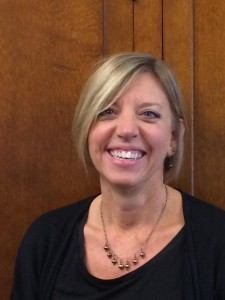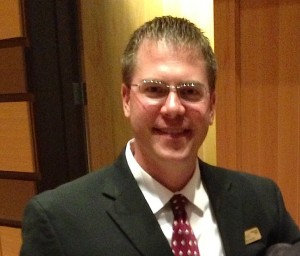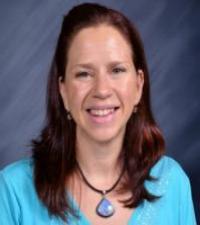Three doctoral students from Colorado State University have been tapped to serve on a national panel because of their exemplary model for training students to be teachers by getting them out into local schools.
Derek Decker, Elaine Holmes and Jennifer Roth have been named to the American Association of Colleges for Teacher Education’s Clinical Practice Commission. The 19-member commission has been charged with defining clinical practice criteria. Those criteria will provide a set of expectations for clinical partnerships to which all teacher preparation programs must adhere in order to receive national accreditation.

“These are the criteria every teacher preparation program in the country that wants national accreditation will have to adhere to,” said Decker, an advisor and instructor at CSU.
Holmes teaches social studies and serves as CSU’s site instructor at Fort Collins High School; Roth is assistant principal there.
Lasting impact
Since most school districts only hire teachers from accredited institutions, the three have the opportunity to leave their fingerprints on the quality of teaching in the U.S. for decades to come.
“It’s an honor, really a privilege,” Roth said. “We’re excited to be able to have a national voice in that conversation.”
The approach used by CSU’s Center for Educator Preparation, in which students spend more than 800 hours in middle and high schools in the Poudre and Thompson school districts before their final semester as a student-teacher, has been held up as a national model.
“Our students are teaching from the very beginning of the program,” Decker said. “They spend about half of their time in the schools.”
Clinical practice varies
In 2010, a Blue Ribbon Panel on Clinical Preparation and Partnerships formed by the National Council for Accreditation of Teacher Education found that clinical preparation was a key lever to high-quality teacher preparation. But there is a great deal of variety in the amount of clinical practice that teacher prep programs require their students to complete.
“Although we know how essential classroom experiences are to a candidate’s preparation, we also see a broad spectrum of practices being labeled ‘clinical,’” said Rodrick Lucero, AACTE’s vice president for member engagement and support, who is chairing the commission. “It is high time to create a shared and actionable definition of what high-quality clinical practice looks like to be able to continually improve individual programs and the field as a whole.”
The approach used at CSU, the “Professional Development School” model, inspired by educational researcher John Goodlad, places extensive emphasis on field experience and is patterned after the clinical work required in the field of medical education. The goal, Decker said, is equal rewards for the K-12 students, teachers and college students.

“We’ve seen it in action and know it works,” Roth said, adding that about 30 percent of her high school’s staff graduated from CSU’s program.
‘A blessing’
Holmes, who graduated from Fort Collins High School and CSU’s teacher education program, now knows the model inside and out.
“It’s truly a blessing to be both a product of and an instructor in this system,” she said. “From the moment the CSU students walk into our school, they are no longer students, they are teachers. And that’s a transforming process for them.”
Holmes added that having the CSU students in class benefits her as well, whether it’s their excitement level or their tech savvy.
“They can bring a new take to a subject that I’ve taught for 20 years now,” she said. “I still use learning plans that CSU students have brought to me.”
Roth said having CSU students assist teachers also gives the districts’ students more hands-on instruction because it cuts the student-to-teacher ratio in half.
“Think about the additional things we can do, having these excited, trained young adults in the classroom,” she said, adding that the CSU students are not constricted to the classroom of the teacher they are assigned. “They visit every class imaginable, from an advanced placement course to a special needs class.”
CSU faculty benefit
Heidi Frederiksen, co-chair of the Center for Educator Preparation, noted that the approach helps CSU faculty as well.

“Because of our model, our faculty are in schools every day and we see the practices, policies, and problems that schools face in real time,” she said. “Because of this, we are able to effectively put theory into practice for our students in a very real environment.”
“I am pleased to learn that our Professional Development Schools program has been recognized as a leader in the nation,” said College of Health and Human Sciences Dean Jeff McCubbin. “This program provides great learning experiences for the CSU students who are engaged in local schools long before they have their student teaching experience. This planned and incremental learning curriculum helps to prepare our graduates to be ready to enter the teaching profession with confidence.”
In addition to developing the criteria, the commission will produce a white paper on the topic; they were meeting this week in Washington, D.C., to start writing. Decker, Holmes and Roth are doing a literature review to provide existing evidence supporting their model.
The CPC, which includes representatives from professional associations, institutions of higher education and K-12 school districts, has also been charged with recommending ways to address common roadblocks to building successful district-university partnerships, such as transportation, funding and scheduling concerns. It will complete its work over the next six months.